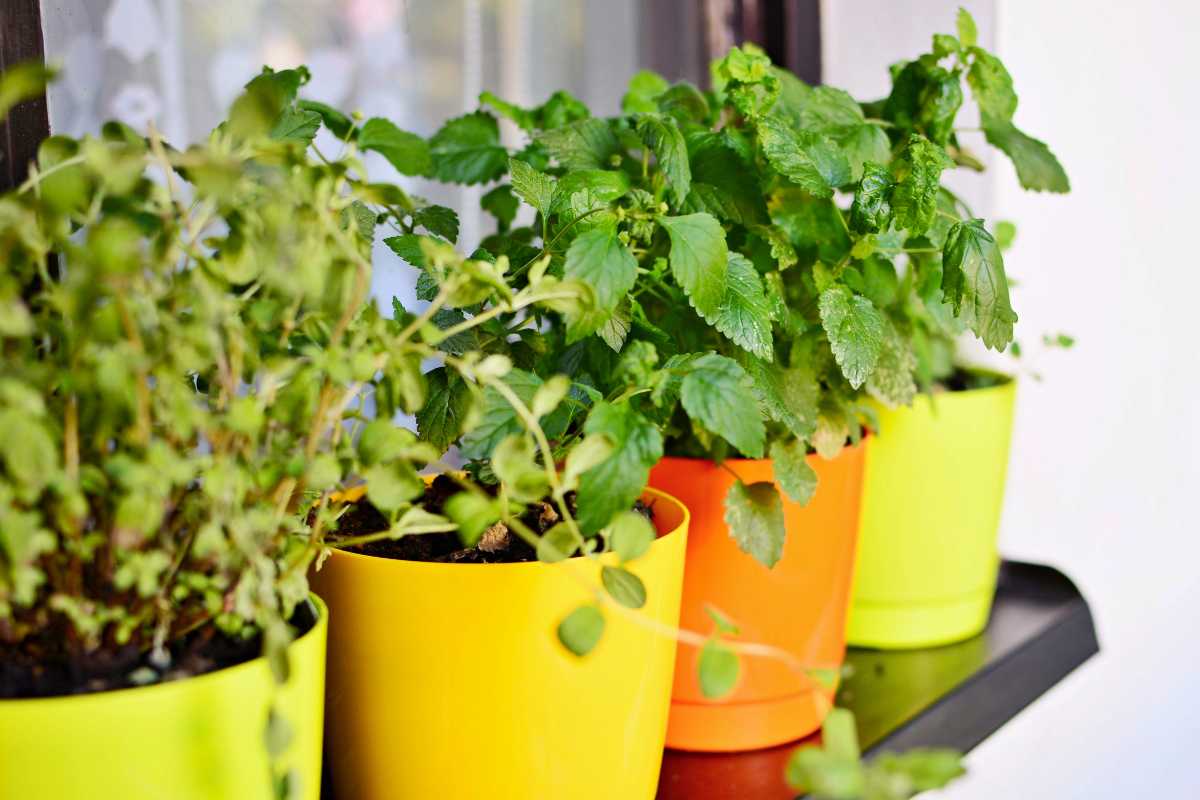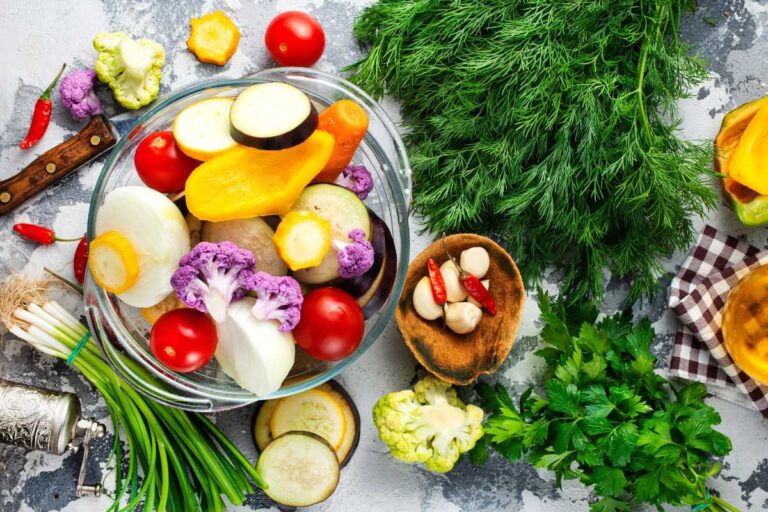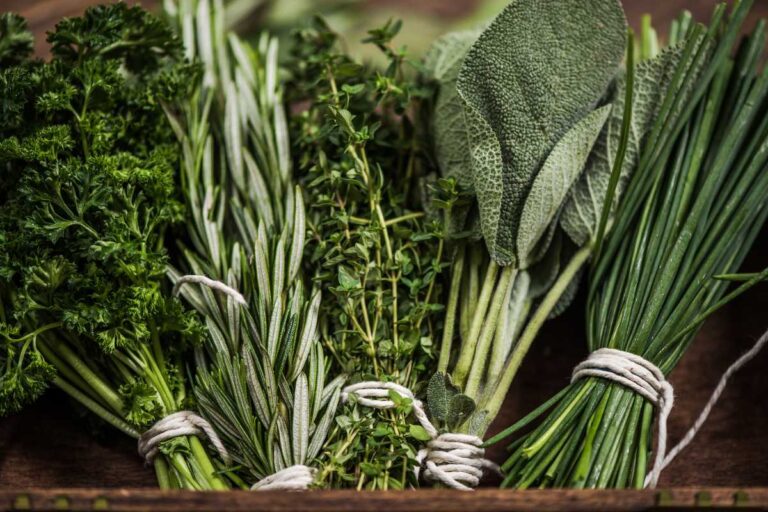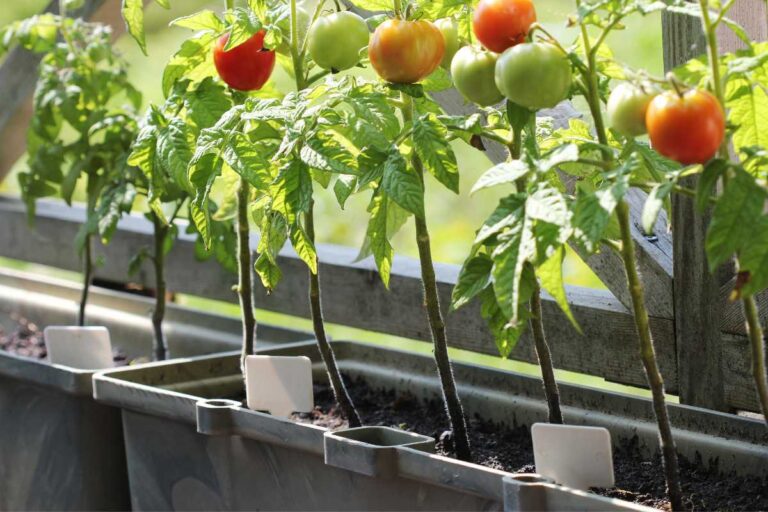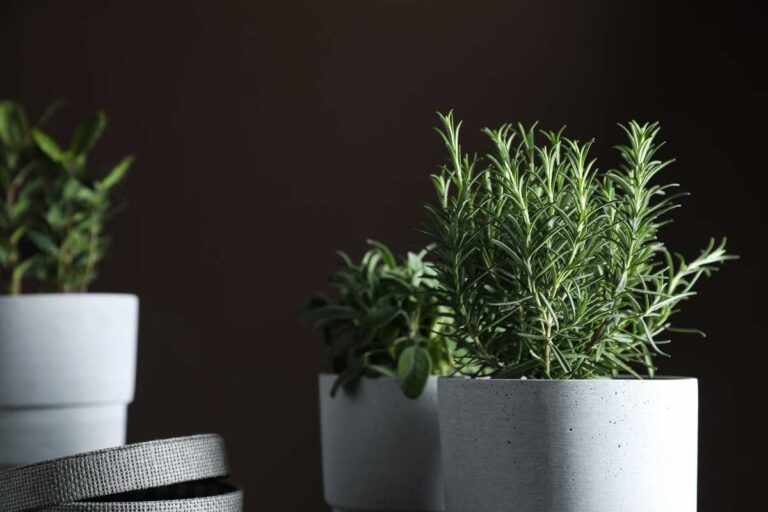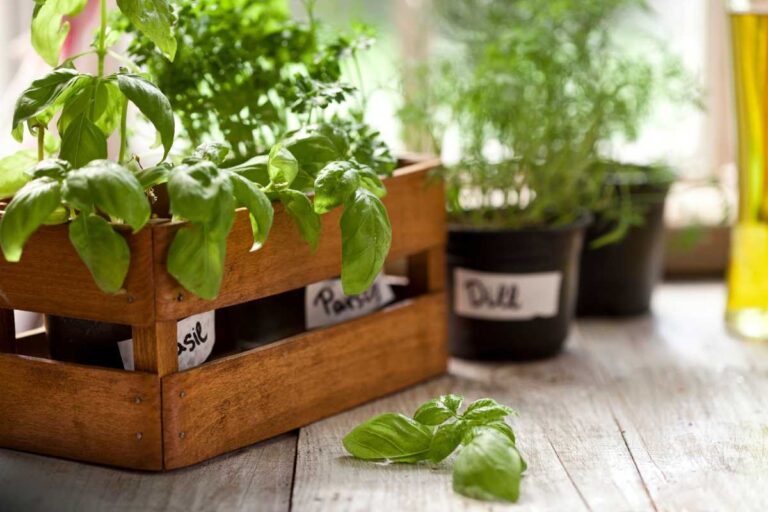Hardy Herbs to Grow Outdoors: 10 Cold-Resilient Picks
Hardy Herbs to Grow Outdoors: 10 Cold-Resilient Picks

Hardy herbs are a fantastic addition to any outdoor garden, offering a plethora of benefits for both seasoned and novice gardeners alike. With their bushy growth habit and ability to withstand various weather conditions, hardy herbs are a reliable choice for those looking to cultivate an herb garden that thrives year-round.
Whether you have limited gardening experience or simply want low-maintenance plants, hardy herbs are an excellent starting point.
One of the key advantages of growing hardy herbs is their resilience in different climates. These robust plants can endure harsh winters and scorching summers, making them suitable for a wide range of regions.
Hardy herbs boast mature heights that provide structure and visual appeal to your outdoor space. From the fragrant aroma of rosemary to the bold flavors of thyme and oregano, these versatile herbs offer an array of tastes and scents that enhance culinary creations.
If you’re eager to embark on your gardening journey or seeking new additions to your existing herb collection, look no further than hardy herbs.
With their adaptability, easy cultivation instructions, and ability to thrive in average soil conditions even in full shade areas, these resilient plants are sure to delight both your senses and taste buds.
Tired of struggling with outdoor herb gardens in unpredictable weather? Discover the secret to successful herbal gardening indoors and enjoy fresh herbs year-round. Check out our article now!
Top 10 Hardy Perennial Herbs for Year-Round Harvesting
Incorporating perennial herbs is a fantastic choice. These resilient plants can be harvested all year long, providing a constant supply of fresh flavors and health benefits. Not only are they easy to maintain, but they also add an aromatic touch to any outdoor space. Let’s explore the top 10 hardy perennial herbs that will keep your kitchen stocked with delicious ingredients throughout the seasons.
Minimal Maintenance Perennials
- Rosemary: This woody perennial herb thrives in full sun and well-drained soil. With its fragrant needle-like leaves, rosemary adds a delightful flavor to roasted meats and vegetables. It requires minimal watering and pruning, making it an ideal choice for busy gardeners.
- Thyme: Known for its small green leaves and delicate flowers, thyme is another low-maintenance perennial herb that can withstand harsh weather conditions. Its earthy flavor complements soups, stews, and marinades perfectly.
- Sage: With its velvety gray-green foliage, sage is not only visually appealing but also incredibly versatile in the kitchen. This perennial herb pairs well with poultry dishes and imparts a warm aroma when used in stuffing or sauces.
Culinary Uses and Health Benefits
- Mint: Offering a refreshing burst of flavor, mint is a must-have herb for both culinary enthusiasts and herbal tea lovers alike. Its cooling properties make it an excellent addition to salads, desserts, or as a garnish for beverages.
- Chives: These slender green shoots pack a punch of onion-like taste that enhances various dishes such as omelets or creamy mashed potatoes. Rich in vitamins A and C, chives also provide numerous health benefits.
- Lemon Balm: As its name suggests, lemon balm offers a delightful citrusy aroma that brightens up any recipe. This perennial herb is perfect for teas, desserts, and even homemade herbal syrups.
Incorporating Perennial Herbs Into Daily Cooking
- Oregano: Known for its robust flavor profile, oregano is a staple in Mediterranean cuisine. Whether sprinkled on pizza or added to pasta sauces, this perennial herb adds depth and complexity to dishes.
- Lavender: Beyond its enchanting fragrance, lavender can be used in both sweet and savory recipes. From lavender-infused honey to lavender shortbread cookies, this versatile herb brings a touch of elegance to your culinary creations.
- Parsley: Often used as a garnish, parsley is an underrated herb that deserves more attention. Its vibrant green leaves not only add freshness but also provide a good source of vitamins A and C.
- Marjoram: With its mild yet slightly sweet taste, marjoram is an excellent addition to roasted vegetables or grilled meats. This perennial herb complements other spices and herbs beautifully while adding a distinct aroma to your favorite dishes.
Incorporating these hardy perennial herbs into your garden will ensure a year-round supply of fresh flavors and health benefits right at your fingertips. From rosemary’s woody aroma to the delicate flowers of thyme, each herb brings its unique touch to elevate your culinary creations effortlessly. So why wait?
Cold-Hardy Herbs: 13 Varieties That Survive Winter
Many people assume that they can only be cultivated during the warm seasons. However, there is a diverse selection of cold-hardy herb varieties that can not only survive but thrive in harsh winter conditions. These resilient plants bring flavor and fragrance to your garden all year round. Let’s explore 13 such cold-hardy herb varieties that will withstand the coldest of seasons.
Discover a Diverse Selection of 13 Cold-Hardy Herb Varieties
- Mints: Mint is known for its refreshing aroma and cooling properties. The hardiest mint varieties include peppermint, spearmint, and apple mint.
- Thymes: With their delicate foliage and aromatic leaves, thyme varieties like English thyme, lemon thyme, and creeping thyme are excellent choices for cold climates.
- Sages: Sage is an evergreen herb that adds a touch of warmth to any dish. Common sage, pineapple sage, and tricolor sage are just a few examples of cold-hardy sages.
- Oreganos: Oregano varieties like Greek oregano, Italian oregano, and golden oregano thrive in cold climates and add a robust flavor to dishes.
- Rosemary: Rosemary is a hardy herb that can withstand cold temperatures. Varieties such as Tuscan blue, prostrate rosemary, and barbecue rosemary are ideal for colder regions.
- Lavenders: Lavender is a cold-hardy herb with beautiful flowers and a calming scent. English lavender, French lavender, and Munstead lavender are popular choices for colder climates.
- Chives: Chives are a versatile herb that can tolerate cold weather. Common chives, garlic chives, and Siberian chives are great options for colder regions.
- Parsleys: Parsley is a cold-hardy herb that adds freshness to various dishes. Common parsley, Italian flat-leaf parsley, and curly parsley are commonly grown in colder climates.
- Dill: Dill is a cold-tolerant herb with feathery leaves and a unique flavor. Fernleaf dill, Bouquet dill, and Mammoth dill are popular choices for colder regions.
- Cilantro: Cilantro, also known as coriander, is a cool-season herb that can handle cold temperatures. Slow-bolt cilantro, Santo cilantro, and Calypso cilantro are suitable for colder climates.
- Fennel: Fennel is a cold-hardy herb with a licorice-like flavor. Bronze fennel, Florence fennel, and sweet fennel are cold-tolerant varieties.
- Lemon Balm: Lemon balm is a hardy herb with a citrusy aroma. Common lemon balm, variegated lemon balm, and lemon balm ‘All Gold’ are cold-resistant options.
- Marjoram: Marjoram is a cold-tolerant herb with a mild and sweet flavor.
These are just a few examples from the extensive list of cold-hardy herbs available for outdoor cultivation during winter.
Protecting Your Cold-Hardy Herbs During Extreme Temperatures
While these herbs possess natural resistance to colder temperatures compared to other plants, it’s essential to provide them with some protection during extreme weather conditions. Here are a few tips:
- Mulching: Apply a layer of organic mulch around the base of your herbs to insulate the roots and retain moisture.
- Covering: Use frost blankets or row covers to shield your plants from freezing temperatures while still allowing air circulation.
- Container gardening: If you’re growing herbs in pots or containers, move them closer to the house or into an unheated garage during severe cold spells.
By implementing these protective measures, you can ensure the survival and continued growth of your cold-hardy herbs throughout the winter season.
Creative Ways to Use Winter-Surviving Herbs in Warming Dishes
When the weather outside is chilly, what could be better than indulging in dishes infused with the flavors of cold-hardy herbs? Here are some creative ways to incorporate these winter-surviving herbs into your cooking:
- Soups and stews: Add a handful of fresh or dried thyme leaves to hearty soups or stews for an earthy aroma and depth of flavor.
- Infused oils and vinegars: Create flavorful infusions by steeping sage, rosemary, or oregano in olive oil or vinegar. These can be used as dressings, marinades, or drizzled over roasted vegetables.
- Herbal teas: Brew a soothing cup of tea using mint leaves, chamomile flowers, or lemon balm for a comforting drink that warms you from within.
The possibilities are endless. Get creative and experiment with different combinations to elevate the taste of your winter dishes.
Growing Hardy Herbs Outdoors: 6 Suitable Options
Hardy varieties are a great choice. These resilient plants can withstand various weather conditions and provide a bountiful harvest. From soil types to sunlight requirements, we will cover everything you need to know to successfully cultivate these herbs in your garden.
Herb #1: Rosemary
Rosemary is a popular hardy herb known for its aromatic leaves and delightful flavor. It thrives in well-drained soil with a pH level between 6 and 7. This herb requires full sun exposure for at least six hours a day. To plant rosemary outdoors, ensure the soil temperature is above 70°F (21°C). Plant young rosemary plants about 2 feet apart to allow them enough space to reach their mature dimensions of approximately 3-4 feet in height and width.
Herb #2: Thyme
Thyme is another hardy herb that adds wonderful flavor to various dishes. It prefers well-drained soil with a pH level ranging from 6.0 to 8.0. While thyme can tolerate partial shade, it thrives in full sun exposure for at least six hours daily. Plant thyme outdoors after the last frost date when the soil has warmed up adequately. Space thyme plants around 12 inches apart, as they will grow up to approximately 10-12 inches tall and spread out about the same distance.
Herb #3: Sage
Sage is an excellent choice for outdoor cultivation due to its resilience and versatility in culinary applications. It flourishes in well-drained soil with a pH level between 6 and 7.5. Full sun exposure is crucial for sage’s optimal growth; therefore, ensure it receives at least six hours of direct sunlight each day. When planting sage outdoors, space the plants approximately 2 feet apart. Sage can reach a mature height and width of around 2-3 feet.
Herb #4: Oregano
Oregano is a hardy herb that adds a distinct flavor to various Mediterranean dishes. It prefers well-drained soil with a pH level between 6 and 8. This herb requires full sun exposure for at least six hours daily to thrive. Plant oregano outdoors after the last frost date, spacing the plants around 12 inches apart. Oregano can grow up to approximately 1-2 feet in both height and spread, so ensure enough room for its mature dimensions.
Herb #5: Chives
Chives are versatile hardy herbs that bring a mild onion-like flavor to your culinary creations. They prefer well-drained soil with a pH level ranging from 6.0 to 7.0. While chives can tolerate partial shade, they thrive in full sun exposure for at least six hours each day. Plant chive bulbs or young plants outdoors during the spring season, spacing them approximately 6 inches apart. Chives typically reach their mature dimensions of about 12-18 inches in height and spread.
Herb #6: Parsley
Parsley is an essential herb in many recipes and is relatively easy to grow outdoors.
Embrace the Resilience of Hardy Herbs
Hardy herbs are renowned for their ability to thrive in challenging outdoor environments. Their adaptability and resilience make them a popular choice for gardeners who want low-maintenance plants that can withstand varying weather conditions throughout the seasons.
Understanding the Tenacity of Hardy Herbs
One of the key reasons hardy herbs are known for their resilience is their inherent hardiness. These plants have evolved to survive and flourish in diverse climates, from hot summers to cold winters. Their genetic makeup enables them to endure extreme temperatures, droughts, and even frost.
Hardy herbs have developed various mechanisms to cope with changing weather patterns. For instance, they often possess woody stems that provide structural support and protection during harsh conditions. This adaptation helps them retain moisture and prevents damage caused by strong winds or heavy snowfall.
The Benefits of Growing Resilient Plants
Choosing hardy herbs for your garden offers several advantages. Firstly, these plants require less maintenance compared to more delicate varieties. Once established in well-draining soil, they can generally fend for themselves without constant attention or extensive care routines.
Furthermore, hardy herbs offer versatility in culinary applications. You can use fresh leaves such as rosemary or thyme in herb butter recipes or steep them in hot water for flavorful herbal teas. With a wide range of cultivars available, you can experiment with different flavors and aromas while enjoying the convenience of having these herbal treasures just outside your door.
Celebrating the Tenacity of Hardy Herbs
Embracing the resilience of hardy herbs goes beyond recognizing their practical benefits; it’s about appreciating their incredible strength and endurance. These shrubby plants serve as a reminder that nature has its way of adapting and thriving against all odds.
To celebrate the tenacity of hardy herbs, consider incorporating them into various aspects of your life. Create an herb garden filled with different species, cultivating them in rich soil with good drainage. Observe their growth habits and the unique characteristics of each plant.
You can also explore the diverse uses of hardy herbs beyond culinary applications. Discover their medicinal properties, such as soothing teas for relaxation or herbal remedies for common ailments. Immerse yourself in the rich history and folklore surrounding these resilient plants, deepening your appreciation for their cultural significance.
Parsley: Versatile and Easy-to-Grow Herb
Parsley is a versatile herb that can be used in various culinary dishes. Its fresh and vibrant flavor adds depth to soups, stews, salads, and sauces. Not only does it enhance the taste of your meals, but it also provides numerous health benefits. Growing parsley in your outdoor garden is a rewarding experience that requires minimal effort.
To successfully grow parsley, start by selecting the right type of parsley for your taste preferences. There are two main types: curly leaf parsley and Italian flat-leaf parsley. Curly leaf parsley has a milder flavor, while Italian flat-leaf parsley is more robust and aromatic. Consider planting both varieties to enjoy their unique flavors.
When planting parsley, choose a sunny spot in your garden with well-drained soil. Parsley thrives in moist conditions but can tolerate some drought once established. You can sow the seeds directly into the soil or start them indoors before transplanting them outside.
Here are some tips to help you grow healthy parsley plants:
- Prepare the soil: Before planting the seeds or seedlings, ensure that the soil is rich in organic matter. Add compost or well-rotted manure to improve its fertility.
- Sow the seeds: If sowing directly into the soil, sprinkle the seeds evenly and cover them lightly with a thin layer of soil. Water gently to keep the soil moist until germination occurs.
- Thin out seedlings: Once the seedlings have sprouted, thin them out to allow proper airflow and prevent overcrowding. Keep approximately 6 inches of space between each plant.
- Water regularly: Parsley prefers consistently moist soil, so water your plants regularly to keep them hydrated throughout their growth cycle.
- Mulch around plants: Apply a layer of organic mulch around your parsley plants to retain moisture and suppress weed growth. This will also help regulate the soil temperature.
- Harvesting: When your parsley plants reach a height of 6-8 inches, you can start harvesting the leaves. Snip off the outer stems, leaving the inner ones intact for continuous growth.
Incorporating fresh parsley into your everyday meals is a delightful way to elevate their flavors. Here are some creative ideas:
- Parsley pesto: Blend fresh parsley leaves, garlic, pine nuts, Parmesan cheese, and olive oil to create a flavorful pesto sauce. Use it as a spread on sandwiches or toss it with pasta for a quick and delicious meal.
- Herb-infused oils: Combine parsley with other herbs like sweet marjoram, oregano, tarragon, or rosemary to infuse oils. Drizzle these aromatic oils over salads or roasted vegetables for an extra burst of flavor.
- Garnish: Sprinkle chopped parsley over poultry dishes such as roasted chicken or grilled turkey to add freshness and visual appeal.
- Tabbouleh salad: Mix finely chopped parsley with bulgur wheat, tomatoes, cucumbers, lemon juice, and olive oil to make this refreshing Middle Eastern salad.
Growing hardy herbs like parsley in your outdoor garden not only provides you with fresh ingredients but also enhances the overall beauty of your space.
Lemon Verbena: Fragrant Delight for Gardens
Lemon verbena is a delightful herb that not only adds a burst of fragrance to your garden but also offers a plethora of culinary and medicinal benefits. With its refreshing lemony aroma and delicious flavor, it has become a favorite among herb enthusiasts.
Cultivating Lemon Verbena Plants in Your Outdoor Garden
Growing lemon verbena in your herb garden is a rewarding experience that requires some care and attention. This hardy herb thrives in warm climates and prefers well-drained soil with plenty of sunlight. Here are some tips for successfully cultivating lemon verbena:
- Planting: Choose a sunny spot in your garden where the lemon verbena can receive at least six hours of direct sunlight daily. Prepare the soil by adding organic matter to improve drainage.
- Propagation: Lemon verbena can be propagated from cuttings or seeds. Taking cuttings from an established plant is often easier and more successful. Simply cut a 4-6 inch stem from the mother plant, remove the lower leaves, dip the end in rooting hormone powder, and place it in moist potting soil.
- Watering: Keep the soil consistently moist but avoid overwatering as this can lead to root rot. Water deeply once or twice a week during dry spells.
- Pruning: Regular pruning helps maintain compact growth and encourages bushier foliage. Trim back any leggy stems or dead branches to promote healthy growth.
- Winter Care: Lemon verbena is sensitive to frost, so if you live in colder regions, consider growing it in pots that can be brought indoors during winter months.
Medicinal Properties and Health Benefits
Beyond its aromatic qualities, lemon verbena possesses a range of medicinal properties that have been valued for centuries. This herb is known for its calming effects and can be used to alleviate anxiety and promote relaxation. Lemon verbena has digestive benefits and may help soothe stomach discomfort.
Exploring Culinary Uses
Lemon verbena leaves are highly versatile in the kitchen, adding a burst of citrusy flavor to various dishes. Here are some creative ways to incorporate this fragrant herb into your culinary creations:
- Teas: Infuse fresh or dried lemon verbena leaves in hot water for a refreshing herbal tea.
- Desserts: Add finely chopped lemon verbena leaves to cakes, cookies, or custards for a unique twist of flavor.
- Cocktails: Muddle lemon verbena leaves with other herbs and fruits to create deliciously aromatic cocktails.
- Salads: Toss young lemon verbena leaves into green salads or fruit salads for an unexpected burst of freshness.
Fennel and Anise Hyssop: Robust Herb Options
In the quest for hardy herbs that can thrive outdoors, two excellent options to consider are fennel and anise hyssop. Fennel, with its feathery leaves and distinct licorice flavor, is not only a culinary delight but also a hardy perennial herb that can withstand harsh weather conditions.
It is known for its resilience, making it an ideal choice for gardeners looking to grow herbs year-round. Anise hyssop, on the other hand, offers a unique combination of fragrance and beauty. With its vibrant purple flowers and an aroma reminiscent of licorice and mint, this herb adds both visual appeal and flavor to any garden.
As you explore the world of hardy herbs, it’s important to embrace their resilience and versatility. Hardy herbs like fennel and anise hyssop not only survive winter but also provide year-round harvesting opportunities.
By growing these robust herbs outdoors, you can enjoy fresh flavors in your cooking even during the colder months. Whether you’re an experienced gardener or just starting out, incorporating these hardy herbs into your outdoor space will add depth and variety to your herb collection.
Start cultivating a resilient herb garden today by adding fennel and anise hyssop to your outdoor space. With their robust nature and versatile uses in cooking, these hardy herbs are sure to enhance your gardening experience.
FAQs
Can I grow fennel indoors?
Yes, while fennel thrives outdoors due to its need for full sun exposure, it is possible to grow it indoors as well. Ensure that you place the potted plant near a window where it can receive ample sunlight throughout the day.
How do I harvest fennel?
To harvest fennel bulbs, wait until they reach a size of around 3 inches in diameter. Cut the bulb at ground level, leaving some of the stem intact. The leaves and seeds of fennel can be harvested throughout the growing season as needed.
Can anise hyssop attract pollinators to my garden?
Yes, anise hyssop is known for its ability to attract bees, butterflies, and other pollinators to your garden. The vibrant purple flowers and aromatic scent act as a magnet for these beneficial insects.
What are some culinary uses for anise hyssop?
Anise hyssop has a unique flavor profile that combines licorice and mint. It can be used in both sweet and savory dishes, including teas, salads, desserts, and cocktails.
Are fennel and anise hyssop easy to grow from seeds?
Both fennel and anise hyssop can be grown from seeds relatively easily. Sow the seeds directly into well-draining soil after the last frost date or start them indoors a few weeks before transplanting them outside. Follow the specific seed packet instructions for best results.

